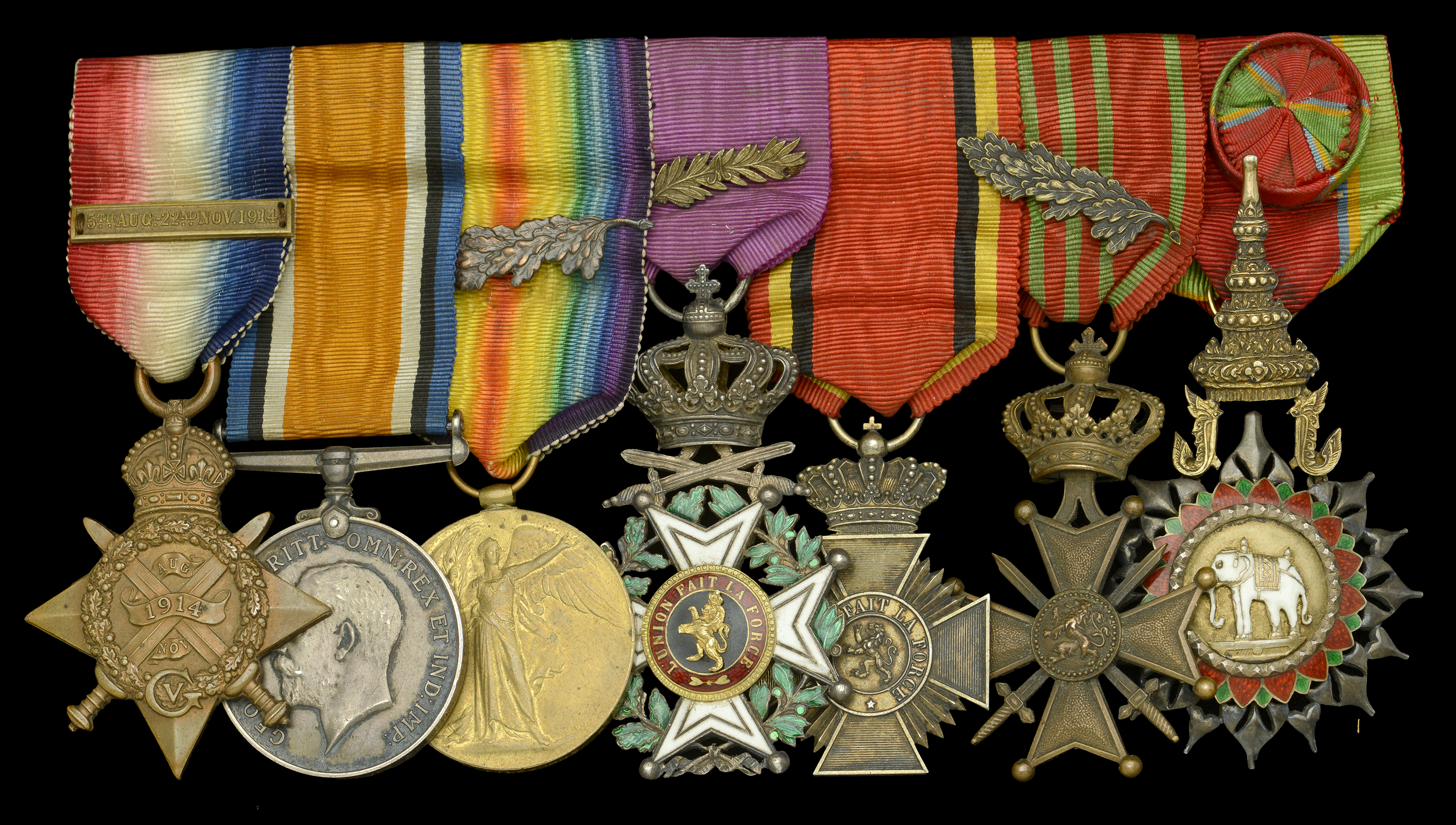The rare and important Great War armoured train operations group of seven awarded to Captain A. S. Littlejohns, Royal Navy, attached Royal Australian Navy, who was awarded the C.M.G. for his command of H.M.A.T. Jellicoe and two other armoured trains in France and Flanders in 1914-15, when he was wounded in action by shellfire at Antwerp 1914 Star, with clasp (Act. Commdr. A. S. Littlejohns, C.M.G.., R.N. Armd. Trains.); British War and Victory Medals, with M.I.D. oak leaves (Commr. A. S. Littlejohns. R.N.); Belgium, Order of Leopold, Knight’s breast badge, with swords and silver palm; Military Decoration, 1st Class, silver-gilt; Croix de Guerre, AI, with bronze palm; Thailand, Order of the White Elephant, Officer’s breast badge, in silver, silver-gilt and enamels, with rosette, mounted as worn but lacking reverse pin, toned, good very fine (7) £3,000-£4,000 --- Importation Duty This lot is subject to importation duty of 5% on the hammer price unless exported outside the UK --- --- Provenance: Morton & Eden, December 2015. 77 1914 Stars issued for service with Armoured Trains, including 6 to officers, all under the command of Acting Commander Littlejohns. C.M.G. London Gazette 22 December 1915: ‘In recognition of distinguished service in command of armoured trains in Flanders.’ Belgian Order of Leopold London Gazette 28 April 1916: ‘In recognition of his services in connection with armoured trains in Belgium.’ Belgian Croix de Guerre London Gazette 14 September 1918. Astle Scott Littlejohns was born on 13 June 1873, the son of W. J. Littlejohns, R.N. of Greenwich Park, and entered the Royal Navy as a Cadet in Britannia in January 1886. Having then attained the rank of Lieutenant-Commander, but in the face of some rather average reports from his superior officers, he resigned his commission at his own request in February 1902. Recalled on the outbreak of hostilities in August 1914, Littlejohns was assigned to the command of the Royal Naval Armoured Trains in France and Flanders in the acting rank of Commander, a role in which he excelled. Given charge of three armoured trains - H.M.A.T. Jellicoe, H.M.A.T. Deguise, and H.M.A.T. Churchill - he covered the withdrawal of the Royal Naval Division at Antwerp and was slightly wounded by shellfire during a sortie from the city. His trains then supported the Allied forces during the battles of Ypres, Givenchy, La Bassée, and Neuve Chapelle. The Jellicoe, which he personally commanded, was armed with three 4.7-inch guns and, a handful of R.N. and R.M. personnel aside, was manned by around 70 Belgian volunteers. His services were duly recognised by King Albert I, in addition to his award of the C.M.G. and a mention in despatches (London Gazette 17 February 1915, refers). Having then served as a Transport Officer at Marseilles, Littlejohns was appointed to the command of the Cicala in October 1916 and remained likewise employed until January 1918. Then in March of the latter year, he was appointed Assistant to the Commonwealth Naval Representative in London, the same year in which he was advanced to Captain in recognition of his war services. Finally, in January 1920, he took over the duties of Naval Representative to the Commonwealth of Australia, in which capacity he held the rank of Captain in the Royal Australian Navy and was thanked by the Governor-General. The origins of his Thai White Elephant award remain uncertain, but his service record states that he was granted restricted permission to wear the insignia in early 1927. Captain Littlejohns died in December 1939.





